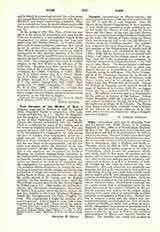

Popayàn, Archdiocese of (POPAYANENSIS), lies approximately between 1° 20′ and 3° 2′ north latitude, and 78° 4′ and 80° 3′ east longitude. Since the Decree of the Sacred Congregation of the Consistory (July 7, 1910), the boundaries of the archdiocese are, on the north, the Diocese of Cali, along the Rivers Sonso and Rio Claro; on the west, the same diocese, along the mountain chain of the Cordillera Occidental; on the south, the Diocese of Pasto, along the Rivers Patfa and Juanambu, and on the east, the Diocese of Garzon, along the Cordillera Central. The archdiocese comprises the entire Department of del Cauca and portions of the Departments of Narifio and EI Valle. The diocese was established by Paul III September 1, 1546; the see, however, was not erected until September 8, 1547, when the first bishop named to the see, Don Juan del Valle, performed the ceremony by Apostolic delegation at Aranda del Duero, in the Diocese of Osma, Spain. The diocese became a suffragan of Lima, and so remained until 1573, in which year Bogota became a metropolitan see and received Popayan among its suffragans. The Sacred Congregation of the Consistory, however, by its Decree of June 20, 1900, made Popayan an archdiocese, with Pasto, Garzon, and Cali for suffragans, its first archbishop being Don Manuel Jose de Cayzedo. Among the Bishops of Popayan, special mention should be made of Agustin de la Coruna (1509-89), an Augustinian, who was a student under St. Thomas of Villa-nova. He suffered vexations, and even banishment, for his activity in defense of the Indians. Bishop Carlos Bermudez (1827-86) restored the seminary, and suffered banishment through his firm defense of the rights and privileges of the Church. The Bishop Juan Buenaventura Ortiz (1840-94) wrote a history of the Diocese of Popayan (Historic de la Diecesis) and a treatise on religion for colleges (Religion para los Colegios).
M. ANTONIO ARBOLIDA

